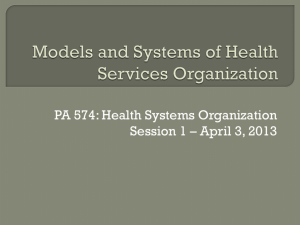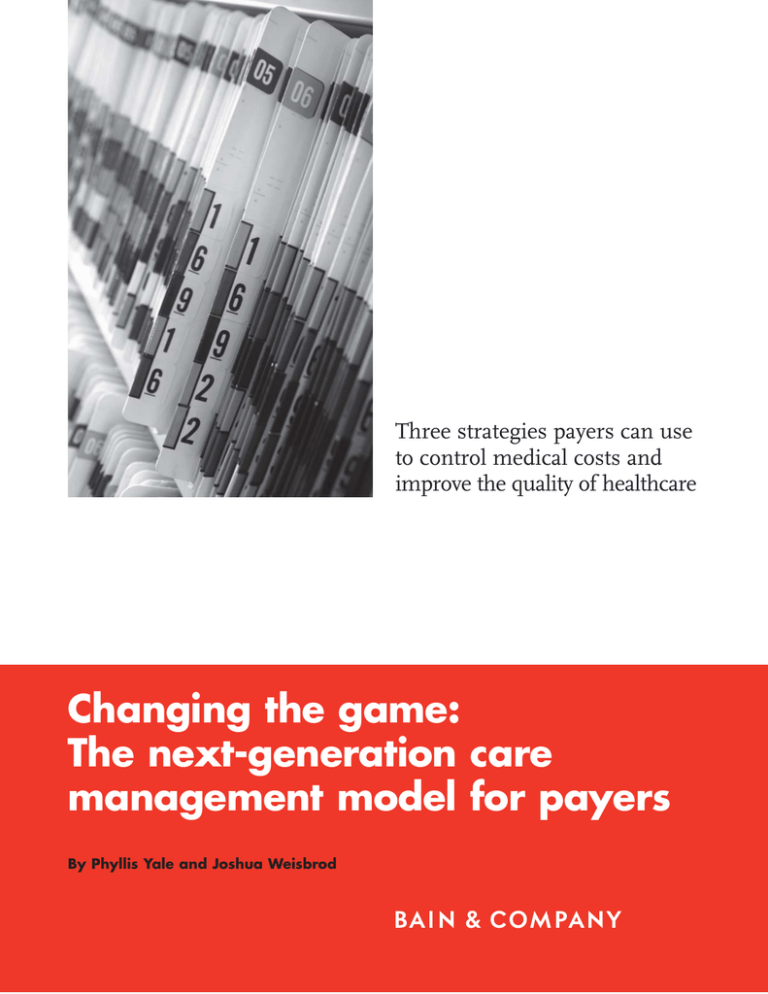
Three strategies payers can use
to control medical costs and
improve the quality of healthcare
Changing the game:
The next-generation care
management model for payers
By Phyllis Yale and Joshua Weisbrod
Phyllis Yale is a partner with Bain & Company in Boston and a leader in Bain’s
Global Healthcare practice. Joshua Weisbrod is a manager with Bain & Company
in New York and part of Bain’s Global Healthcare practice.
The authors would like to thank Chad Johnston, manager with Bain & Company
in Boston, for his contribution to the report.
Copyright © 2010 Bain & Company, Inc. All rights reserved.
Content: Manjari Raman, Elaine Cummings
Layout: Global Design
Changing the game: The next-generation care management model for payers
Three strategies
payers can use to
control medical costs
and improve the
quality of healthcare
In this world nothing is certain but death and
taxes—and to add to the truism—the escalating
cost of healthcare. The days of payers automatically passing through cost increases to
employers and members are over. Even before
the worst of the recession, the employer-sponsored
insurance market declined by 1.6 million
enrollees between 2007 and 2008. If payers
don’t take action, the vise on their bottom lines
will continue to tighten—with lower margins
squeezing on one side and declining membership rolls on the other. At a more macroeconomic level, the failure to contain costs may
even exacerbate the call for a strong public
option or a single payer in the next round of
healthcare reform.
cost of care delivery. Plans currently spend
approximately 15 percent of their total administrative costs on traditional medical management—managing payments, managing the network, designing the plan, and disease and case
management—but most have not been able
to significantly or consistently reduce utilization
(see Figure 1). We believe payers can make
significant strides in reducing care-delivery
costs. But this will require a transformational
approach to managing healthcare; tinkering
on the edges will not be sufficient.
Despite the building pressure, payers find it
hard to escape this predicament because they
have limited options. In terms of paying healthcare institutions, they know it is unrealistic to
expect any substantial improvement in pricing
any time soon. In fact, healthcare providers are
very likely to seek even higher payments from
health plans to offset the reimbursement gap
caused by the likely increase in public-sector
patients. And on the administrative cost front,
payers have already made significant improvements in recent years and will find it hard to
squeeze costs more.
In a recent research initiative, Bain studied
more than 125 medical management programs
in the US to identify what succeeded and what
failed in the efforts to lower costs through
improved care management. In most cases, we
found that the major cause of poor utilization
control is the payer’s siloed and reactive approach
to medical management. Typically, payers act
like hockey goalies without defensemen, seeking
to deflect every shot any way they can—using
a glove (prior authorization, for example), a
pad (utilization review), or a stick (a diseasemanagement call center). Often, there are too
many shots to deflect—and many find their
way easily into the net. For payers, this means
hundreds of unnecessary or duplicate tests,
conflicting courses of treatment for patients,
and small problems growing into much more
expensive ones. Our research shows that instead,
payers should invest in “defensemen”—in this
case, members and providers. The former can
help by managing their own health better and
making better choices when they seek care;
the latter can provide support by delivering
and coordinating care in a lower-cost manner.
In the future, therefore, payers will need to
focus on the toughest changes of all: reducing
the need for medical care and lowering the
To move to this very different approach to
care management, payers should focus on
three main levers.
1
Changing the game: The next-generation care management model for payers
Figure 1: Historic payer investments in care management have not improved utilization
Utilization outcomes are highly variable
across diseases, without an overall trend…
…and the utilization levels of
individual plans also vary substantially
Emergency department, inpatient event rates (indexed)
Absolute utilization
1.50
2.5
1.25
Diabetes
Congestive heart failture
Chronic obstructive
pulmonary disease
Asthma
1.00
Coronary artery disease
0.75
0.50
00 01 02 03 04 05 06 07
2.0
1.5
1.0
0.5
5
0
5
10
15
20%
Utilization trend
Note: Absolute utilization measured as emergency department and inpatient events per 1000; Utilization trend measured as CAGR of emergency
department and inpatient events per 1000
Source: Disease Management Purchasing Consortium (21plan benchmark database)
1. Revolutionize member incentives
By strengthening member incentives to manage
their own health better—and by developing
incentives that motivate members to participate—payers can dramatically lower the need
for costly care delivery. While payers have been
reticent to design and enforce strict incentive
mechanisms for their insured members, there
is proof that the idea works: Several self-insured
employers have taken the lead in designing the
right incentives and successfully implementing
them through carrot-and-stick mechanisms.
In our study, we found that self-insured
employers who are leaders on this front
attacked medical costs in three main ways:
•
2
Motivating behavior and lifestyle changes
for primary and secondary prevention:
Historically, many employers invested in
primary prevention through initiatives
such as wellness programs because it
was motivational for employees and was
accepted as “the right thing to do.” But a
quicker route to reducing utilization is
managing chronic disease. Over the last
20 years the answer to chronic diseases
has been “disease management”—which
has a mixed track record at best. In part,
this is because these efforts were seldom
coupled with financial incentives to bring
about a change in patient behavior.
Best practices are now changing that. On
the primary prevention front, the first
generation of such incentive change was
educating employees on self-care. Pfizer,
for example, provides employees with cash
incentives if they complete health risk
assessments (HRAs). The second gener-
Changing the game: The next-generation care management model for payers
ation of incentive structures goes further,
including “sticks” as well as “carrots.” At
PepsiCo, for instance, employees who
smoke pay a penalty of $600 (the company
also offers a smoking-cessation program),
while IBM employees who regularly
exercise get cash rewards of $150. A few
companies like Safeway have started the
third wave of sharply focused incentives,
linking premiums to the biometric reports
of employees. Overweight employees who
have high blood pressure and lipids, and
who continue to smoke, have health
premiums up to $800 a year higher than
those with healthier biometrics.
that provide high-quality care at low cost. To
encourage use of this network, Hannaford
pays a higher share of the medical costs
associated with visiting these doctors.
Payers too, are beginning to gain traction
here. For example, Aetna has developed
a network similar to Hannaford’s for
members in certain states. This Aexcel®
network comprises the most efficient and
lowest-cost physicians in the 12 highestcost specialties in the broader Aetna network.
Members are financially motivated to use
these physicians based on co-insurance
rates that are 10–20 points lower and copays that are often half as large.
Memo for
action
With a majority
of healthcare
costs tied to
lifestyle choices,
implementing
stricter behaviorbased incentives
is critical. While
there is no perfect
formula, as a
Secondary prevention is also evolving. For
example, many companies have begun
implementing value-based benefit design.
Here, patients are financially motivated
to make choices that are likely to reduce
overall medical expenses even if the payer,
or employer, faces higher immediate costs.
Pitney Bowes, for example, reduced
members’ share of payment for drugs used
in treating three chronic conditions—
diabetes, asthma, and hypertension—an
average reduction of 50-85 percent in the
cost of a 30-day refill, according to the
Center for Studying Health System change.
Since the program’s introduction, Pitney
Bowes says it has observed reductions in
direct medical costs, sick-leave, and disability rates—all of which combine to
outweigh the increased employer share
of the drug cost.
•
Incentives to choose particular providers:
Many large employers (and health plans)
have started tiering their networks based
on quality and efficiency. Hannaford, for
example, identified a network of doctors
•
High-deductible health plans (HDHPs):
Studies show that increased consumer
financial responsibility reduces both
healthcare use and spending. As a result,
high-deductible health plans, (defined here
as plans in which a person must pay at
least $1,000 out of pocket annually before
the plan pays a share of the costs) now
represent 22 percent of all covered employees, up from 10 percent in 2006, according to the Kaiser Family Foundation. This
mechanism could result in both limiting
the need for care and improved provider
choice. However, since these plans don’t
provide immediate financial incentives for
healthy living, HDHPs end up accomplishing many of the same goals as the tiered
networks described above. For example, by
employing an HDHP and contributing
$1,800 to a Health Savings Account, Whole
Foods Market has made the total cost of
care transparent to employees as opposed
to being shielded by the traditional co-pay
system. As a result, employees choose the
lower-cost option more often.
starting point, can
payers double
the amount of
incentive dollars
currently “in play”
for each member—
and double the
percentage of
members using
those incentives?
3
Changing the game: The next-generation care management model for payers
Based on these successful programs, we believe
that payers would benefit most from the following best practices: linking member actions
directly to financial consequences; using both
sticks and carrots; motivating members to
manage their own health; tiering networks
based on quality, efficiency, and cost; and
involving healthcare providers in ways that
reinforce the incentives. There is plenty of
room for improvement for payers on this
dimension: Currently only about 3–8 percent
of employers link premiums to even participating in a wellness program, let alone health
outcomes. And there is considerable incentive
to do so. While national healthcare costs have
increased by 8–10 percent a year, several
innovative companies have succeeded in
reversing that trend markedly: Quad/Graphics
(reduced annual healthcare cost increase to
6 percent); EMC (4–6 percent); Hannaford
(5 percent); Gulfstream (3 percent); Analog
Devices (3 percent) and Safeway (0 percent)
(see Figure 2). Self-insured employers may
have been the pioneers but they needn’t be the
only settlers on the frontier. Nothing prevents
payers from replicating this success with their
fully-insured customers.
2. “Get out of the middle” on
patient care
Payers can improve the delivery of healthcare—
and manage costs better—by holding providers
more accountable for the care of chronic patients.
In our experience, 25 percent of a payer’s membership base, on average, is chronically ill and
this subset accounts for approximately 55 percent
of an insurer’s medical cost base. For most
payers this is the core they need to focus on:
By changing provider incentives and helping
them adapt to be more responsible for patient
care and cost of care, payers can slow the
trend of rising healthcare costs.
Figure 2: Payers have significant room for improvement in tying behavior to incentives
…but most firms do not link member
behavior to healthcare premiums
Some innovative large employers have
successfully reduced costs…
Annual healthcare cost trend
Percent of firms reducing worker premiums
based on wellness program participation
10%
100%
90
8
National average
6%
6
70
4–6%
60
5%
50
4
3%
40
3%
30
2
20
0
Quad/Graphics
EMC
Source: Kaiser HRET 2008
4
80
0%
Hannaford
Analog Devices
Gulfstream
Safeway
10
0
3%
Small firms
8%
Large firms
Changing the game: The next-generation care management model for payers
Reform should serve as a catalyst
US healthcare reform—including expected revisions over the coming years—will not rein in
the escalating cost of healthcare in the private sector in the short term because it touches
very lightly on payment reform and does very little to arrest the rising cost trend. What’s
more, reform is actually likely to exacerbate the need for payers to improve utilization and
medical costs. Consider:
•
Exchanges (with defined benefit packages) will further commoditize the individual and
(potentially) small group markets, raising the importance of low-cost care delivery. On
the Massachusetts exchange, the previously uninsured population disproportionately
selected lower-cost plans.
•
According to a recent Milliman Inc. study, annual healthcare spending for an average
family of four is $1,788 higher than it would be if Medicare and Medicaid paid hospitals and physicians rates similar to those paid by private insurers and employers. A
reform-driven shift of lives to Medicaid will likely increase this cost-shift even more,
forcing private insurers to reduce utilization to maintain margins in the face of pressure
to keep premiums down.
•
Self-insured employers will increasingly turn to their carriers to help stem the tide of
costs. Plans that can partner with receptive clients—and overcome their resistance to
innovative measures like stricter incentives and tiered networks—will succeed and build
competitive advantage in their markets.
Finally, it is very possible that health plans will face even greater regulation—and potentially
a very strong public plan—in the next round of reform if they can’t find a way to rein in
costs. In an extreme scenario, payers could even be reduced to public utilities, serving as
claim processors for a single-payer system. So, for both micro and macro reasons, controlling medical costs through improved care management is critical for private payers.
5
Changing the game: The next-generation care management model for payers
Memo for
action
Can a payer
enroll at least
25 percent of its
severe diabetic
or congestive
heart failure
members in a
patient-centered
medical home—
within five years?
In our study, we found that programs in which
payers stepped out of the way and allowed a
coordinated group of providers to manage care
for chronic patients without interference had
greater success in lowering costs than programs
in which payers sought to exert greater control.
When the payer moved to a behind-the-scenes
(though, substantial) role, physicians were
able to manage the patient’s complete needs,
coordinate with other care-givers when necessary, and deal directly with the patient. As they
do on strict incentive design, private payers
often trail on this dimension, however. Now,
with the increasing popularity of “accountable
care organizations”—Medicare pilots, legislation and so on—the time is right for private
payers to adopt bold, new approaches.
intervening when necessary. To align incentives,
BCBS-ND employed a shared-savings approach
with Meritcare. The PCMH approach worked
well on several fronts: Utilization decreased,
member health outcomes improved, and savings
amounted to more than $70 per member per
month (PMPM), or around 10 percent of the
costs per diabetic (see Figure 3).
While there are a number of models for “getting
out of the middle,” our research shows that
patient-centered medical homes (PCMH) can
be among the most effective for managing
chronic patients. Medical costs in these arrangements tend to stay better under control for four
main reasons: There is a single physician in
charge of the patient; there is often strong supporting infrastructure, such as IT systems,
that help share patient data; the care is very
patient-centered and encourages shared decision
making; and the payer is usually able to set
up the right incentives to ensure providers
offer quality healthcare at reasonable costs.
While providers clearly take on much greater
responsibility in this model, payers play a
substantial role, too. For this approach to work,
care coordination must go hand-in-hand with
payment reform; only then are incentives aligned
in a way that appropriately rewards providers
for their increased risk. Specifically, payers and
providers need to commit to a system of payment that rewards high-quality, coordinated,
low-cost care.
Currently, multiple PCMH pilots are underway
across the country and some have already begun
to register promising cost savings. In 2005,
BlueCross BlueShield of North Dakota
(BCBS-ND) partnered with Meritcare Health
System to coordinate the care of 192 members
with diabetes. The medical home assumed
control over educating patients, encouraging
preventive tests, tracking care needs, and
6
The PCMH experiment conducted by New
Jersey’s Horizon BCBS differed slightly. In
this case, the company relied on a third party
to coordinate efforts among physicians and
other providers and suppliers. By ensuring
good coordination for diabetic patients, Horizon
succeeded in reducing total healthcare costs
for pilot patients by about 10 percent.
BCBS Massachusetts’ Alternative Quality
Contract (AQC) is a bold step in this direction.
It pays a “global fee” to a set of physicians that
coordinate a patient’s care; if the group spends
less than this amount, it retains the surplus.
In addition, physicians receive a 10 percent
bonus if they meet certain quality targets
(process, outcomes, and patient experience).
This ensures that physicians do not deliver
less care in order to retain more of the global
payment as margin. According to the BCBS-MA,
it has nearly 25 percent of its HMO covered
lives enrolled in the AQC today.
Changing the game: The next-generation care management model for payers
Figure 3: Innovative PCMH pilots demonstrate significant savings
BCBSND program...
...reduced utilization and costs
• Diabetics visit personal care physician and are
autoenrolled into the plan
• Doctor creates care plan and refers to care
management nurse
Events per
1,000 diabetics
Average costs per
member per year
3
$10K
2.7
9.7
8
• Meeting with nurse is facetoface for coaching on
medications, care plan, etc.
2
6
1.4
• Nurse tracks progress versus goals and schedules
phone followups
7.4
2.0
1.3
4
1
2
• Physician compensation is feeforservice with
sharing of savings
0
Emergency
deparment
visits
Inpatient
admits
Control
Study
0
Control
Study
< $50K in annual
care costs
$50–100K in annual
care costs
Source: BlueCross BlueShield of North Dakota (BCBSND)
However, the AQC is not without its challenges.
First, members don’t always understand that
they must use the AQC sub-network, causing
confusion and potential member dissatisfaction.
Second, many providers are not sure they have
sufficient systems, knowledge, or internal leadership to support this arrangement. To develop
this model further, therefore, payers need to
address the major impediments providers face
in being able to manage a global payment-type
arrangement (see Figure 4). In our recent interviews with providers, they identified several gaps
in being able to manage such arrangements:
•
Physician groups lack capability and
leadership in delivering low-cost care;
•
Physician hospital organizations (PHOs)
or integrated delivery networks (IDNs)
do not structure appropriate incentives
for individual physicians;
•
Information on patients and the financial
implications of treatment are not available;
•
Risk management capabilities, including
ensuring properly risk-adjusted payments,
are lacking;
•
Population management tools, including
treatment standards, are either unavailable
or under-utilized;
•
Patient support infrastructure—specifically,
education and encouraging and motivating self-management—is under-developed.
BCBS’s AQC is addressing many of these
issues by providing information and consulting
support to providers, facilitating best-practice
sharing across providers, and tracking providers’
process and outcomes. However, for the PCMH
model to work, this list must be augmented
7
Changing the game: The next-generation care management model for payers
Memo for
action
Can a payer
reduce its traditional disease
Figure 4: Most providers will need to invest to build capabilities for global payment
Information and analytics
Risk management
• On patients
• On financial implications
of treatment
• Riskadjusted payments
• Financial expertise
(e.g., cash management)
• Financial capacity
(e.g., reinsurance)
• Systems
management
Physician capability
and leadership
spending by
25 percent—and
• Providing lowcost care
• Structure for and knowledge
of care coordination
use the dollars
instead to invest
in data and
patient monitoring technology
Population management
Patient support
• Moving beyond reactive,
1:1 care delivery
• Treatment standards/
utilization management
• Education
• Encouraging and motivating
selfmanagement
that provides a
holistic, transparent view of a
patient’s needs?
8
further. For example, payers need to provide
more support on managing risk and member
incentives: Behavior change is just as important when members are in a global payment
model as it is in a more traditional fee-forservice model.
and reduce cost. For payers who successfully
want to “get out of the middle” and make
global payment arrangements work, focusing
on information sharing and ensuring that
adequate investments are made in supporting
providers will be critical.
Some of the necessary elements are more
valuable than others. In recent interviews, for
example, successful payer-provider integrated
systems such as UPMC and Geisinger attributed a significant portion of their success to
deep and seamless information- and capability-sharing between the plan and the delivery
system. This is becoming more accessible for
non-integrated payers, as well. Firms like
Availity, Emdeon, and NaviNet have already
built the “pipes” to transmit financial information between payers and providers. Some
are now investing to use these pipes to transmit
clinical information that clinicians can use
real-time at the point-of-care to improve care
3. Make structural investments
in information and systems
Payers can get the most out of member
incentives and new provider arrangements
by collecting and analyzing better memberlevel information. In the first two levers, we
saw how valuable information can be in designing the right incentives to motivate patients
and to aid providers in achieving the highestquality and lowest-cost care. But despite investments in information technology—including
significant investments in interoperability and
interconnectivity—payers still struggle to
collect and make use of the necessary informa-
Changing the game: The next-generation care management model for payers
tion about their members: Often, it is fragmented and held by different parties (see
Figure 5). For example, pharmacy, wellness
and mental-health data is often held by outsourced providers and not integrated.
This information gap then manifests itself in
two ways. First, data is seldom available in
real time. Even now, payers rarely know that
a patient has filled the same prescription at
two different pharmacies until they reconcile
Figure 5: Plans should find ways to
integrate and apply data to improve
member health
Wellness,
health risk
assessment
Psycho
graphics
(what do
individuals
respond to?)
Patient data
from remote
monitoring
Core patient
claims data
Clinical
behavioral
claims data
Employer
HR data
(absenteeism,
productivity)
Health
status from
disease
management
calls
Pharmacy
claims and
fill data
Clinical
medical
claims data
Member
satisfaction
surveys
Enrollment
(health history,
socioeconomic
background)
Customer
service
calls
Analytics
Database
Decision
support
Segment members
and customize
interactions
Frequently
outsourced
Intervene
at the right time
Usually not
outsourced
Provide actionable
information
to providers
Rarely
available today
data weeks later. Second, even when some data
is available in real-time, payers are forced to
apply one-size-fits-all solutions rather than
develop targeted strategies for managing chronic
members. This allows both overuse of care
and gaps in care, both of which prove costly.
The first issue—lack of actionable, real-time,
patient information—can be overcome with a
combination of new and existing technology.
Consider Quantum Health, a $10 million
member-services and benefit-design firm that
works in partnership with claims processors
to provide full plan administration services
for employers. Members are encouraged and
financially motivated, via plan incentives, to
call Quantum Health for both clinical and
member-service guidance. When a member
calls, nurses and medical directors use real-time
data to channel the patient to the right referrals,
the lowest-cost care, and health education.
Quantum has reduced costs for its clients by
identifying overuse of the Emergency Department (ED) and coaching members on when
to use the ED; increasing use of PCPs before
visiting specialists; preventing duplicative tests
and services before they occur; recognizing
conditions presented by members telephonically
and directing care accordingly; and reviewing
each inpatient case every day to help transition
to long-term care as soon as possible. Through
these mechanisms, Quantum is able to generate reductions in both inpatient admissions
and average length-of-stay. These reductions
would generate gross savings of 15–20 percent
on inpatient costs in a typical population,
and Quantum shares these savings with its
employer clients.
Our research shows that the second major use
of data and technology should be focused on
member engagement that increases self9
Changing the game: The next-generation care management model for payers
management both pre-emptively for healthy
patients and during chronic disease care
(both outside of and inside PCMH-type
arrangements). Not surprisingly, members
respond to different offerings and psychological
inducements, so tailoring messages is critical.
A University of Oregon study that targeted
members with chronic illness in LifeMasters’
DM program used technology to assign each
member a Patient Activation Measure (PAM),
which was calculated based on the patient’s
knowledge, engagement, and propensity to
change behavior. Patients at a particular PAM
score received specialized coaching focused
on realistic activities for improving the health
of the patient based on what they would or
would not respond to. In the study, the treatment group saw a sharp drop in utilization—
a 33 percent decline in in-patient admissions
and a 22 percent decline in emergency
department visits.
Generating this improved level of engagement
is not easy, but payers are now experimenting
with some low-cost, high-tech approaches that
can help. MVP Health Care, for example, sends
lists of diabetic members who are missing
their tests to Eliza Corp., a company that
employs an interactive voice-recognition system. These patients receive automated calls
from Eliza, which confirms the identity of the
patient, provides health coaching, and links
patients to live health-coaches if needed. The
Eliza system is interactive and adaptive, engaging the patient based on his or her responses
rather than applying a one-size-fits-all approach
to member health management. MVP’s effort
is paying off: Its diabetes patients have increased
their annual test frequency and are reporting
better control of their health.
10
Next steps for payers
Transformational change is never easy, but this
change is critical for the healthy survival of
the managed care industry. To begin this care
management transformation, we suggest
thinking through the following Care Management Diagnostic for your organization:
•
What are the biggest near-term care management improvements the organization
can make before developing the longerterm system? What is easily achievable?
•
What medical cost opportunities are
greatest in size and accessibility?
•
What would be the key components of a
next-generation care management model
given the organization’s member and
provider base? How would the key components be linked together? How would
this new model increase the strength of
incentive structures, help in “getting out
of the middle” where appropriate, and
improve the collection and use of member-level information?
•
What constraints (e.g., local market structure, existing strategies) exist? How would
these constraints hold back the optimal
system? How can they be overcome?
•
Which required capabilities, systems, and
approaches are present in the organization
today? Which capabilities would need to be
built or acquired to implement the model?
What investment would be required?
•
How could potential partners (e.g., other
payers, technology firms) play a role?
Where would they be most valuable?
Changing the game: The next-generation care management model for payers
An even bolder move for high-share payers?
Our next-generation care management model requires major investment and, we believe,
can make a significant difference in arresting rising medical costs. But payers that have
very strong positions in a market—especially markets in which providers are not willing to,
or able to, be accountable for the cost of care—could push the envelope even further by
integrating forward in the healthcare value chain, into primary-care delivery. There is
already a need for greater primary-care access, and that is likely to grow more acute as
coverage expands.
This forward integration could take different forms. For example, a payer could employ a
set of physicians and physician extenders (registered nurses, physician assistants and so
on) and set up clinics at major employer-customer worksites or free-standing clinics. Or a
payer could partner with a retailer to run a clinic within a large, centrally located store, as
many hospitals and physician groups are already doing at select Walmart locations.
Regardless of the mix of sites, a seamless electronic medical record maintained by the
payer would link the sites and the powerful informatics engines behind the scenes.
To be sure, there are hurdles to clear. For example, the economics of this model particularly
suits payers with significant local market share. In addition, payers would need to think
about channel conflict with primary-care physicians, especially if they are closely allied
with large integrated health systems. Finally, payers would need to add physician capabilities to their toolkit. However, if the right payer were to clear these hurdles, it would control
medical costs more directly.
•
•
What capabilities can local provider partners bring to bear? What gaps do they have?
Which capabilities can the organization
help providers build?
What organizational changes might be
required to reach full potential in the
new model?
•
What pilots are required and how should
they be scoped?
•
What current care management efforts
could serve as the foundation of broader
care management pilots or programs?
11
Changing the game: The next-generation care management model for payers
In our experience, the Care Management
Diagnostic provides payers with a very practical
approach to improving their ability to slow
the trend of rising medical costs. Historically,
payers entrusted their medical management
organizations with most—if not all—of the
responsibility for controlling utilization. These
medical management organizations, in turn,
tried to control utilization with very blunt
instruments like traditional utilization review
and prior authorization because they had no
control over more robust instruments, such
as member incentive/benefit design (reason:
embedded in business units), provider relationships and payment (often housed within
a Provider Relations group), or the ability to
truly engage members (completed by the
business units, if done at all).
In the future, these three parts of the organization—product, benefit and incentive design;
network contracting and payment; and traditional medical management—must work
together in a consistent fashion with a clear
strategy. At the very least, this means improved
coordination among the owners of these levers.
To wring out the most savings, payers may
need to consider organizational moves that
take them out of their comfort zones. That is
therefore a challenge that must be championed by top leadership. Only a CEO or COO
can drive transformational change and ensure
that executives and staff work across silos,
better coordinate systems, integrate data and
technology, and align the entire organization
on a single goal: to provide quality care at a
lower cost.
12
Changing the game: The next-generation care management model for payers
Bain’s business is helping make companies more valuable.
Founded in 1973 on the principle that consultants must measure their success in terms
of their clients’ financial results, Bain works with top management teams to beat competitors
and generate substantial, lasting financial impact. Our clients have historically outperformed
the stock market by 4:1.
Who we work with
Our clients are typically bold, ambitious business leaders. They have the talent, the will
and the open-mindedness required to succeed. They are not satisfied with the status quo.
What we do
We help companies find where to make their money, make more of it faster and sustain
its growth longer. We help management make the big decisions: on strategy, operations,
technology, mergers and acquisitions and organization. Where appropriate, we work with
them to make it happen.
How we do it
We realize that helping an organization change requires more than just a recommendation.
So we try to put ourselves in our clients’ shoes and focus on practical actions.
For more information, please visit www.bain.com

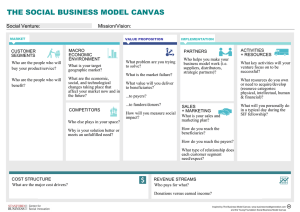
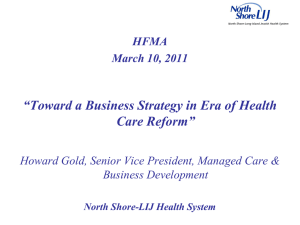
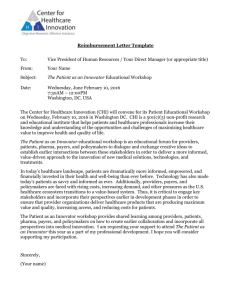
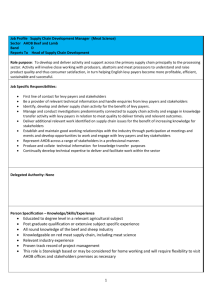
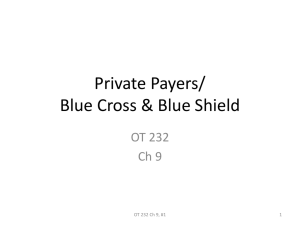
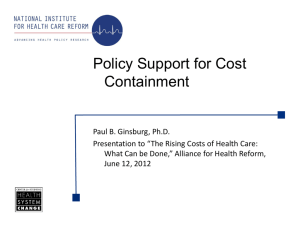
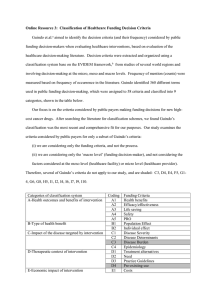
![[Medical Director] [Name of Contractor] [Address] [Address] [Date](http://s3.studylib.net/store/data/007181140_1-9fc41a11423fb81baaffea8254c27e1e-300x300.png)
